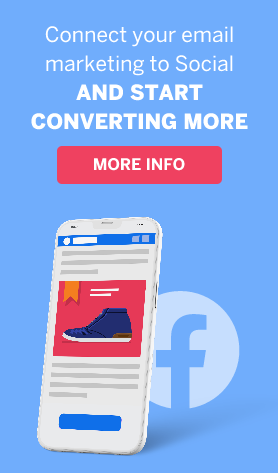Incorporating Conversational Voice in B2B Email Marketing
Email marketing, the proven king of digital marketing, is vital to any business, yours included. As part of your overall marketing strategy, email marketing not only serves to lure in potential clients, but also allows you to engage your existing customers on an ongoing basis, and it is considered an effective line of communications. However, having been around for some time, many marketers have forgotten how to formulate successful email marketing strategies.
Good communications with your subscribers (and, hopefully, eventual customers) is crucial as they constitute the first part of your outreach. If your target audience isn’t happy with the way you communicate with them, there’s a good chance you will fail to convert them. The Content Marketing Institute has this to say on the subject: “81% of content marketers believe that interactive content grabs attention more effectively than static content”.
Having established the importance of good communications with subscribers, here are a number of key factors to keep in mind when trying to form an effective email marketing strategy:
-
Write in your own tone of voice
We are not robots and most of us don’t like being addressed as one. Consequently, when creating an email campaign, remember that the content you generate will be read by a person, not a machine. Put yourself on the receiving end of your email – you wouldn’t want to get an email containing a bland, un-interesting, structured message, would you? So, write as if you are the one who will be receiving the mail.
- Structure your mail to fit the formality of your recipient. Are you approximately the same age? What is their position and title? Who are they in their company (how important are they)? Is he or she the owner? Are they the overall person in-charge? With that said, don’t get too formal. Think when using honorary words and stick with a style that you think will be comfortable for them.
- Follow the naming style recipients use in their communications with you. If they use your first name in their reply, you may also do the same. It simply means that they are getting comfortable. Many people like to drop the formality at some stage, as they feel that by doing so they can better express their sentiments.
Knowing the person who will be reading your content is a key factor you should try and be aware of, however, you may only learn this over time. As such, start writing as if you, yourself, are the target audience. If you think that you would want to read what you’ve written, while maintaining the mindset of your recipient, then go with it.
2. Learn to engage your recipient
Email marketing is about your recipients, not about you. Avoid, therefore, emails that sound autobiographical, and try to involve your recipients as much as possible. Remember that you are delivering email messages that should convey the potential value you can add to your recipients’ businesses. Bragging about your own success does not serve this purpose.
A good way to educate your subscribers about your business and your offerings, is to use a ‘case study’ that illustrates actual results and benefits you’ve provided to other clients.
According to Gallup, “customers who are fully engaged represent a 23% premium in terms of share of wallet, profitability, revenue, and relationship growth, as compared with the average customer”.
Avoid detrimental email marketing mistakes by following these simple rules:
- Make your subject lines specific and direct
- Learn whether your recipient wishes to keep the conversation formal or to loosen up
- Proofread everything
- Stay professional and never negatively mention your competitors
You must never forget the reasons for which you are reaching out to your subscribers. Always make sure that you are true to your words and limit exaggerations. However, while your focus might be your recipients, you may, and should, directly promote yourself as well, but be careful that your subscribers don’t perceive these promotions as boasts. To help with this, the best policy is often, simply to be honest.
3. Be cautious with business jargon
Not everyone is familiar with the terms you use in your business on a daily basis. If you are reaching out to an engineering firm, you should use the jargon they speak and be fluent in it. Try avoiding email campaign rejection by not delivering the wrong messages to the wrong subscriber list.
Don’t use language you think your subscribers won’t understand. It’s okay to be professional, but try not to be condescending. A great way to do that is to add visual aids such as infographics or screenshots. This has the compounded effect of simplifying your email campaigns and bringing your tone to a friendly voice, rather than appearing as a large amount of text full of incomprehensible professional terminology.
Conclusion
We suggest you consider using empathy to create compelling email campaigns and newsletters. According to Copy Blogger: “…empathy is the foundation of a good conversation. Understand the problems your readers are struggling with, and address those problems using their words.”
Author bio
SEO consultant Al Gomez is the man behind Dlinkers, a company dedicated to complete digital marketing services. With more than ten years of experience, he enjoys supporting smartpreneurs like himself achieve online success.



